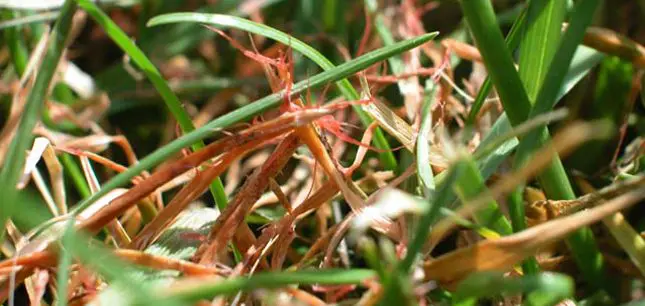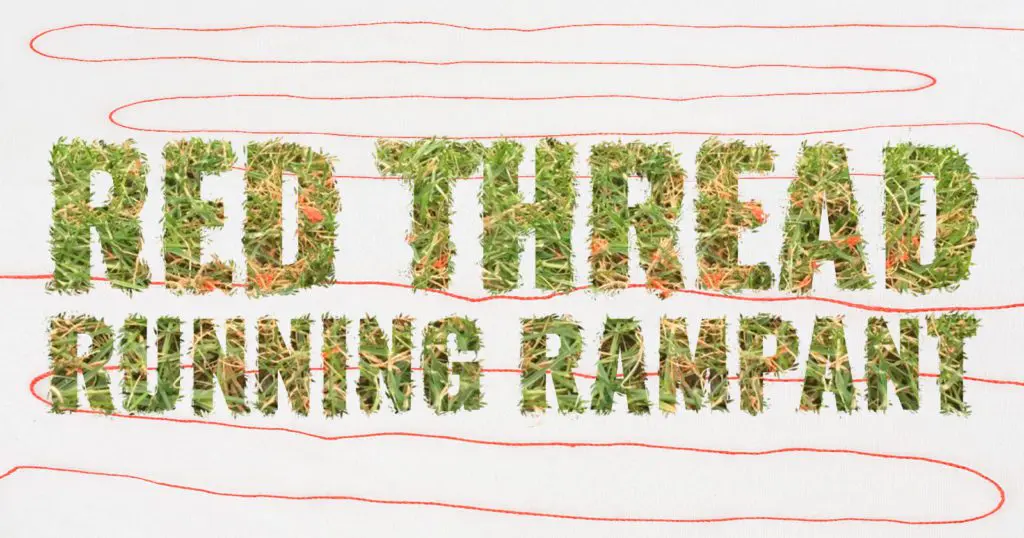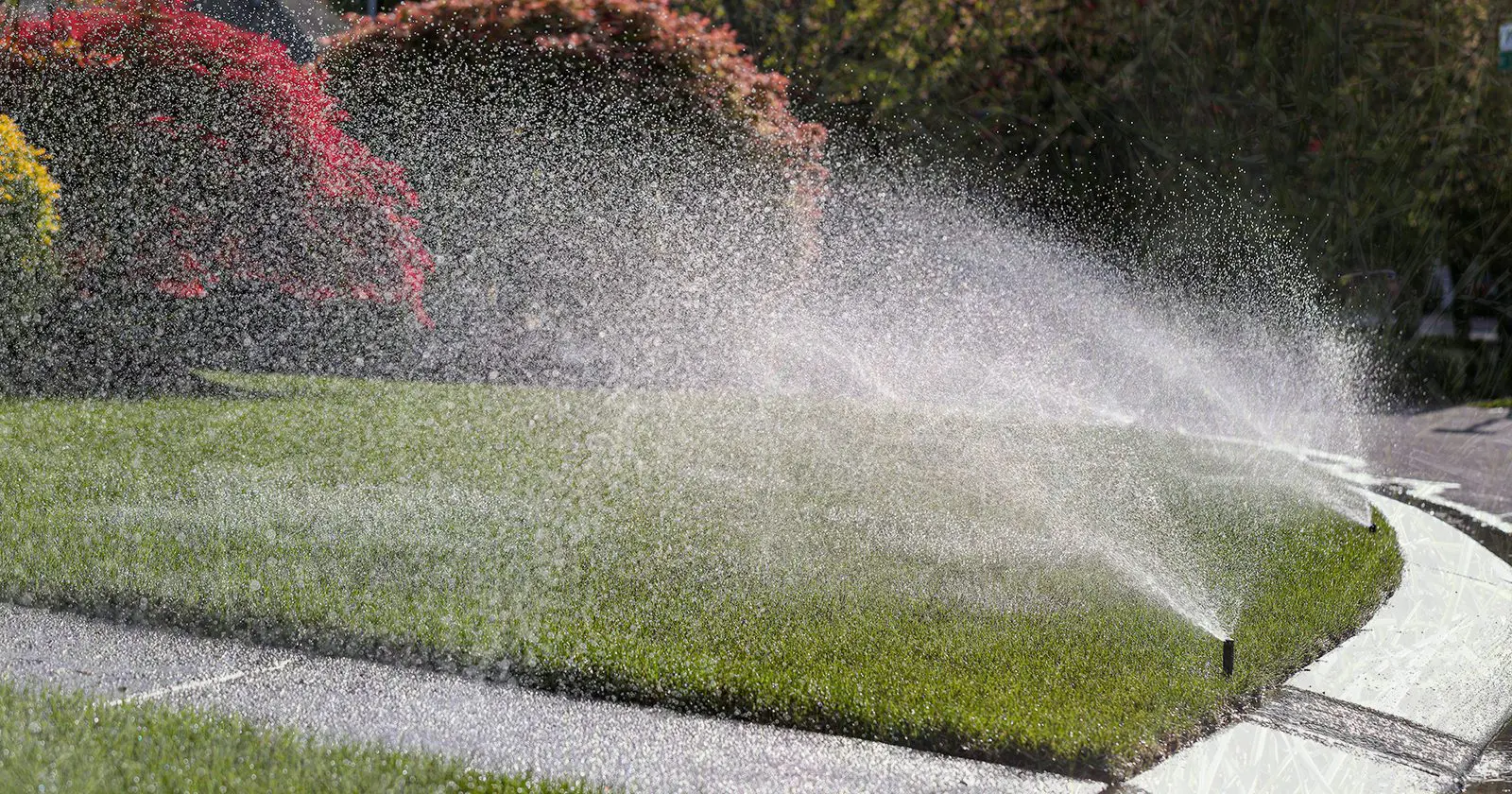A Fungus Among Us?
Red Thread is one of the most common fungal patch diseases found on lawns during these warm summer months. Other lawn funguses commonly found in turf grasses in New England during this time of year are Pythium and Dollar Spot.
Although it may appear unsightly, the good news is there are several disease-control options available. The best thing you can do for a diseased lawn is to aerate and nourish the soil beneath the turf.
Aeration Heals Your Lawn’s Wounds
First, start with proper lawn aeration to ensure that the lawn breathes. Aeration loosens impacted soil and enhances new growth after broadcast seeding. Broadcast seeding coupled with a top-dressing of our own “Black Gold” organic compost is the most cost-effective approach to correcting the problem that “mother nature” has created. Broadcast Seeding and fertilization enhances new growth by 200% and ensures bare spots grow in.
What is Red Thread?
Red Thread has been running rampant on the North Shore this season. This lawn fungus appears in turf as small pinkish-red spots or patches, usually when temps are high, and humidity is higher. Infected areas eventually turn light tan, and the leaf tips or margins may be covered with fine pink to red threads, giving the turf an overall pink coloration.

Red Thread takes its name from the antler like structures produced by a fungus (Laetisaria fuciformis) on the tips of its blade. Generally, it is most severe and may cause significant damage to both perennial ryegrass and creeping red fescue. Red thread usually presents itself during warm summer temperatures. We see it most often when there is prolonged high relative humidity, dense fog or overcast skies which commonly occurs this time of year.
Symptoms of Red Thread
The infected grass will firstly be ‘bleached’ in color; the grass will turn pale cream/white. Not all grass blades will be affected, as non-infected blades may exist next to infected blades. In these circumstances the grass will appear visibly messy. In moist conditions the fungus will form the pink branching threads. Once the threads are well developed the lawn will have reddish/pinkish tinge to it in small patches, these patches may join together to form larger patches.
Treating Red Thread
First you should have your lawn evaluated and diagnosed by a professional who will identify and address your lawn’s needs. If your lawn has become infected with a fungus, there are two major ways to treat.
The first method is to allow your lawn, and the fungus, to grow out. We apply Triple 19 (19-19-19 – basic lawn fertilizer) to help the lawn with the process. This method is easier, but it takes a considerable amount of time for the lawn to grow out.
The second method is more intense, but it is quicker and more effective. Fungicide, a type of chemical, is applied to the infected area. A good approach to controlling or eliminating Red thread is having your lawn treated with the proper Fungicide. Often times it takes 2 applications of fungicide per year to help your lawn get through the season. Once your lawn has been treated, water deeply and consistently twice weekly.
When to Water your Lawn
It’s best to water your lawn early in the morning or early evening. Never water at night – it makes grass susceptible to disease.
Red Thread Lawn Fungus on the move!
The thing you need to remember is that most turf fungus is NOT a major concern. It will go away on its own with proper care. The first line of defense is aeration with compost top-dressing and broadcast seeding to rejuvenate and add missing nutrients to your soil. Secondly, timely fertilizer and fungicide applications will ensure the health of your lawn throughout the entire growing season. The third component to ensure a lush lawn is keeping up with weekly maintenance, such as a regular irrigation schedule and consistent mowing.
If you are seeing anything that looks like Red Thread on your turf, and you are not currently on our fertilization program, please let us know! The sooner the lawn is treated the better the outcome.



